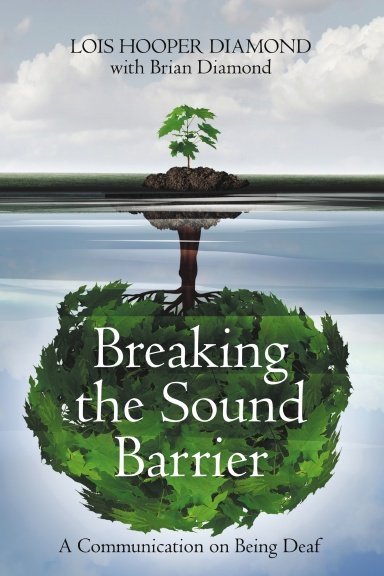Breaking the Sound Barrier: A Communication on Being Deaf
Imagine yourself as a normal, healthy seven-year-old child. One day, you begin to feel sick, showing signs of a fever, and thinking you just have the flu, your parents tuck you into bed and tell you to rest. When you awake, you look up and realize that your father’s lips are moving but you cannot hear what he is saying. Noises around you are not there. You are deaf, and your life has abruptly and forever changed. This was Lois Hooper Diamond’s reality and Breaking the Sound Barrier: A Communication on Being Deaf takes you into the world of the millions who live without sound.
Although spinal meningitis took her hearing when she was a little girl, Lois would go on to become an advocate, teacher, and give voice to her community. Deafness is more than just hearing loss; it is a culture. Lois answers many questions about deafness, including exploring whether deaf children should be taught to lip-read and orally communicate or be encouraged to learn sign language.
Lois’ book is a compelling human interest story from struggle to triumph, and a witness to how the Americans with Disabilities Act (ADA) and advances in technology revolutionized the lives of millions and brought deaf/hard of hearing Americans from society’s fringe into the mainstream.
Imagine yourself as a normal, healthy seven-year-old child. One day, you begin to feel sick, showing signs of a fever, and thinking you just have the flu, your parents tuck you into bed and tell you to rest. When you awake, you look up and realize that your father’s lips are moving but you cannot hear what he is saying. Noises around you are not there. You are deaf, and your life has abruptly and forever changed. This was Lois Hooper Diamond’s reality and Breaking the Sound Barrier: A Communication on Being Deaf takes you into the world of the millions who live without sound.
Although spinal meningitis took her hearing when she was a little girl, Lois would go on to become an advocate, teacher, and give voice to her community. Deafness is more than just hearing loss; it is a culture. Lois answers many questions about deafness, including exploring whether deaf children should be taught to lip-read and orally communicate or be encouraged to learn sign language.
Lois’ book is a compelling human interest story from struggle to triumph, and a witness to how the Americans with Disabilities Act (ADA) and advances in technology revolutionized the lives of millions and brought deaf/hard of hearing Americans from society’s fringe into the mainstream.
Imagine yourself as a normal, healthy seven-year-old child. One day, you begin to feel sick, showing signs of a fever, and thinking you just have the flu, your parents tuck you into bed and tell you to rest. When you awake, you look up and realize that your father’s lips are moving but you cannot hear what he is saying. Noises around you are not there. You are deaf, and your life has abruptly and forever changed. This was Lois Hooper Diamond’s reality and Breaking the Sound Barrier: A Communication on Being Deaf takes you into the world of the millions who live without sound.
Although spinal meningitis took her hearing when she was a little girl, Lois would go on to become an advocate, teacher, and give voice to her community. Deafness is more than just hearing loss; it is a culture. Lois answers many questions about deafness, including exploring whether deaf children should be taught to lip-read and orally communicate or be encouraged to learn sign language.
Lois’ book is a compelling human interest story from struggle to triumph, and a witness to how the Americans with Disabilities Act (ADA) and advances in technology revolutionized the lives of millions and brought deaf/hard of hearing Americans from society’s fringe into the mainstream.
